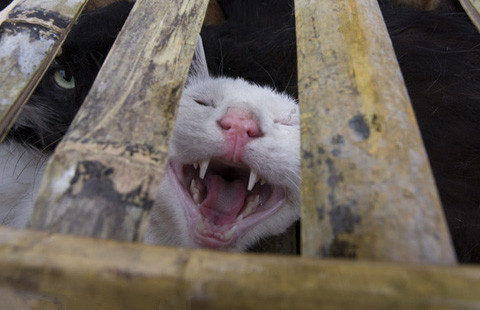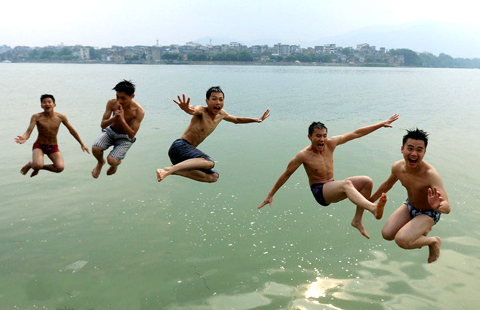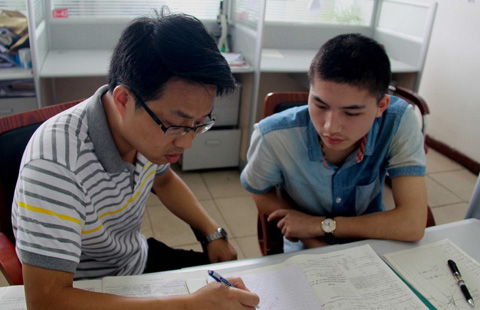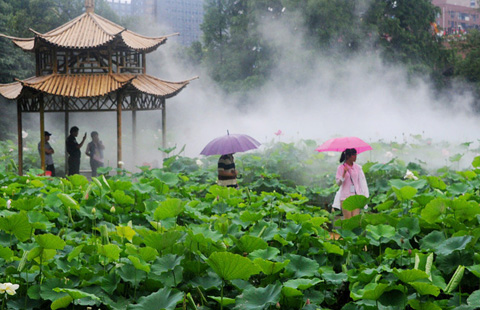Capital hastens effort to cut PM2.5 pollution
Updated: 2014-07-08 07:25
By Zheng Xin (China Daily)
|
||||||||
The Chinese capital is attempting to speed up the reduction of fine-particulate pollutants, with the aim of reaching the internationally recognized safe level, as it bids to be host for the 2022 Winter Olympics, authorities have said.
Despite challenges, Beijing will make all efforts to reduce its concentration of PM2.5, which is particulate matter with a diameter of 2.5 microns or smaller, said Pan Tao, head of the Beijing Research Institute of Environmental Protection.
PM2.5 pollutants can penetrate the lungs and are very harmful to health.
Pan said it was estimated that the city's PM2.5 intensity is expected to be reduced to 60 micrograms per cubic meter as of 2017 and 35 micrograms per cubic meter as of 2030, from the current 89.5 micrograms per cubic meter.
The city's ambition to host the 2022 Winter Olympics with Zhangjiakou, a city in neighboring Hebei province, has drawn public attention to the smog issue, a much-debated topic in Beijing during the past several years.
The city's environmental authority said it has recently taken up tougher measures and levied harsher fines against polluting enterprises to reduce the region's notorious smog.
The city's environmental watchdog has imposed a record fine of up to 26.17 million yuan ($4.22 million) in the first half of the year, targeting coal-fired boilers with excessive smoke exhaust and other polluting industries, including cement and steel plants that lack emission-monitoring facilities, the authority said.
The Beijing Environmental Protection Bureau has also conducted a crackdown on outdoor barbecuing and construction sites that leave dumps uncovered, with a penalty of more than 7.5 million yuan.
It's part of the effort to raise companies' awareness of the cost of pollution while raising the public's and companies' awareness of abiding by the rules, said Fang Li, deputy head of and spokesman for the bureau.
According to the bureau, the major pollutants that are monitored were reduced - sulfur dioxide by 7.25 percent; nitric oxide by 6.29 percent; chemical oxygen demand by 4.30 percent; and ammonia nitrogen by 3.80 percent - from 2012 to 2013.
The capital has invested more than 14.7 billion yuan in fighting pollution so far. The city's bureau of finance vows to invest an additional 47.8 billion yuan in the next five years to further fight air pollution.
The World Health Organization has said that PM2.5 intensity should be no greater than 35 micrograms per cubic meter, whereas Beijing's figure, despite its efforts and determination in the past few years, reached 89.5 micrograms per cubic meter in 2013.
Pan said the key to reducing pollution lies in emission reduction, and the capital's current effort will help bring more polluting companies in line with the law.
Catherine Witherspoon, former executive officer of the California Air Resource Board, said the capital has witnessed policy progress during the past few years.
"The air pollution problem Beijing is facing is very similar to those faced by California in the 1950s," she said. "It took us so long to figure it out, and so would the city."
"It takes time to turn the ship around," she added.
zhengxin@chinadaily.com.cn

 'God father' of HK art honored for Smithsonian exhibit
'God father' of HK art honored for Smithsonian exhibit
 Grateful blessings
Grateful blessings
 Visitors tour Chinese warships
Visitors tour Chinese warships
 Chinese-American police officers rise in NYPD
Chinese-American police officers rise in NYPD
 The world in photos: June 30 - July 6
The world in photos: June 30 - July 6
 Chinese navy to join 2014 RIMPAC naval drill
Chinese navy to join 2014 RIMPAC naval drill
 Gettysburg reenactment marks 151st anniversary
Gettysburg reenactment marks 151st anniversary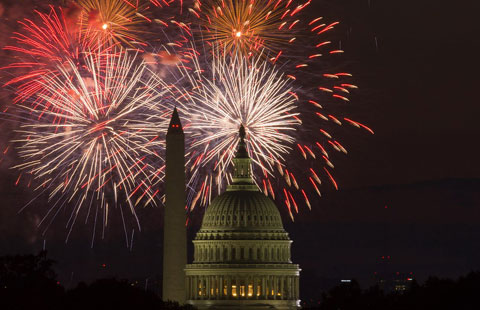
 Washington splashed with fireworks
Washington splashed with fireworks
Most Viewed
Editor's Picks

|

|

|

|

|
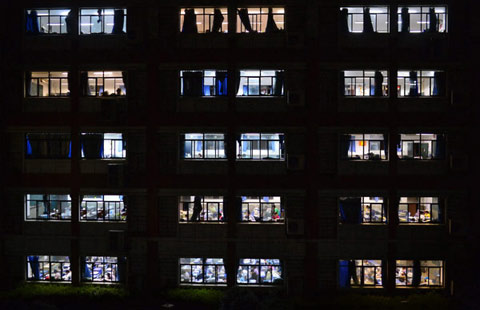
|
Today's Top News
Chinese envoy: 'Time is ripe' for BRICS' bank
US south benefitting from China investment
Talks may help US soy exports
Product placement deal transforms into dispute
China approves Lenovo, IBM $2.3b server deal
Meet the new breed of migrant workers
NetJets awaits green light to start China operations
Unleashing the power of innovation
US Weekly

|

|

